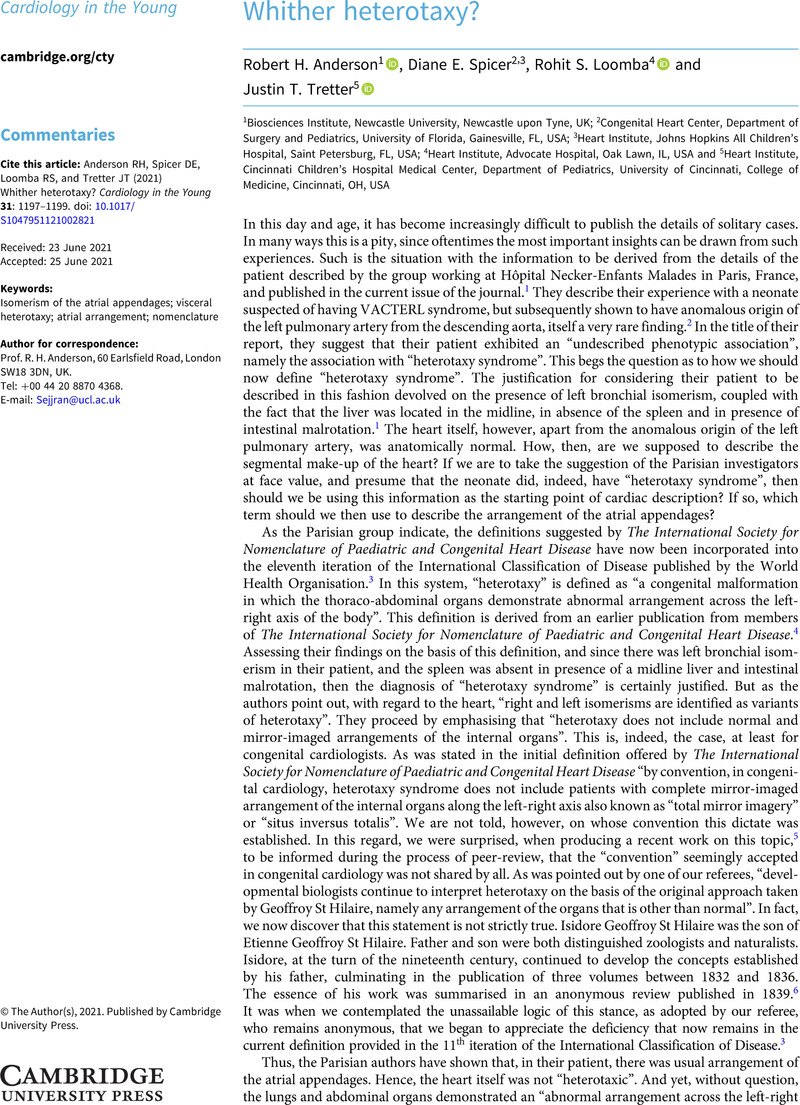Crossref Citations
This article has been cited by the following publications. This list is generated based on data provided by Crossref.
Anderson, Robert H.
Spicer, Diane E.
Loomba, Rohit
Krishna, Mani Ram
and
Tretter, Justin T.
2021.
Heterotaxy – Res ipsos loquitur.
Cardiology in the Young,
Vol. 31,
Issue. 10,
p.
1712.
Krishna, Mani Ram
and
Sennaiyan, Usha Nandhini
2022.
Homozygous variants in the GDF1 gene related to recurrent right isomerism and complex CHD in two Indian families.
Cardiology in the Young,
Vol. 32,
Issue. 12,
p.
2041.




